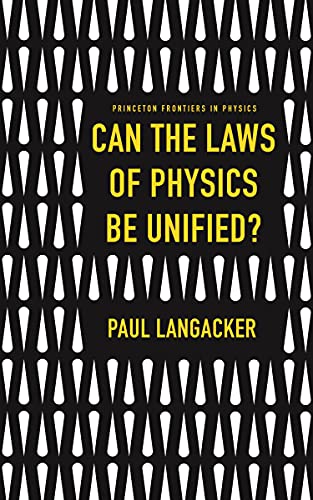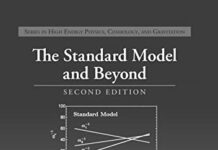
Ebook Info
- Published: 2017
- Number of pages: 288 pages
- Format: PDF
- File Size: 4.89 MB
- Authors: Paul Langacker
Description
A concise introduction to the cutting-edge science of particle physicsThe standard model of particle physics describes our current understanding of nature’s fundamental particles and their interactions, yet gaps remain. For example, it does not include a quantum theory of gravity, nor does it explain the existence of dark matter. Once complete, however, the standard model could provide a unified description of the very building blocks of the universe. Researchers have been chasing this dream for decades, and many wonder whether such a dream can ever be made a reality.Can the Laws of Physics Be Unified? is a short introduction to this exciting frontier of physics. The book is accessibly written for students and researchers across the sciences, and for scientifically minded general readers. Paul Langacker begins with an overview of the key breakthroughs that have shaped the standard model, and then describes the fundamental particles, their interactions, and their role in cosmology. He goes on to explain field theory, internal symmetries, Yang-Mills theories, strong and electroweak interactions, the Higgs boson discovery, and neutrino physics. Langacker then looks at the questions that are still unanswered: What is the nature of the mysterious dark matter and dark energy that make up roughly 95 percent of the universe? Why is there more matter than antimatter? How can we reconcile quantum mechanics and general relativity?Can the Laws of Physics Be Unified? describes the promising theoretical ideas and new experiments that could provide answers and weighs our prospects for establishing a truly unified theory of the smallest constituents of nature and their interactions.
User’s Reviews
Reviews from Amazon users which were colected at the time this book was published on the website:
⭐I appreciate being able educate myself along these lines, but don’t have a lot of confidence that what the book says is right. I’m only on page 7 and have already found four typos. Minor ones are a missing comma (page 3), “desciption” (page 4), and “undertanding” (page 6). So when the equation for the force of gravity (page 7), which is vector F = GMm/r^2, has a subscript N and an r hat (^) inserted in the numerator, I think they are typos. I see on page 11 that he calls the gravitational constant, G subscript N, and from a search I find that r hat is a unit vector. We’ll see how it goes. I also don’t like the godless worldview he holds, but I can at least spot where he’s wrong there.Mrs. D
⭐This was a fascinating read. I must admit, though, that some training in the methods of theoretical physics has definitely helped me to read it faster. But there is no doubt that the book presents a very organized and clear exposition of not only all the features of our current understanding but also of the outstanding issues that are set to guide research in the field for the foreseeable future.
Keywords
Free Download Can the Laws of Physics Be Unified? (Princeton Frontiers in Physics Book 6) in PDF format
Can the Laws of Physics Be Unified? (Princeton Frontiers in Physics Book 6) PDF Free Download
Download Can the Laws of Physics Be Unified? (Princeton Frontiers in Physics Book 6) 2017 PDF Free
Can the Laws of Physics Be Unified? (Princeton Frontiers in Physics Book 6) 2017 PDF Free Download
Download Can the Laws of Physics Be Unified? (Princeton Frontiers in Physics Book 6) PDF
Free Download Ebook Can the Laws of Physics Be Unified? (Princeton Frontiers in Physics Book 6)
